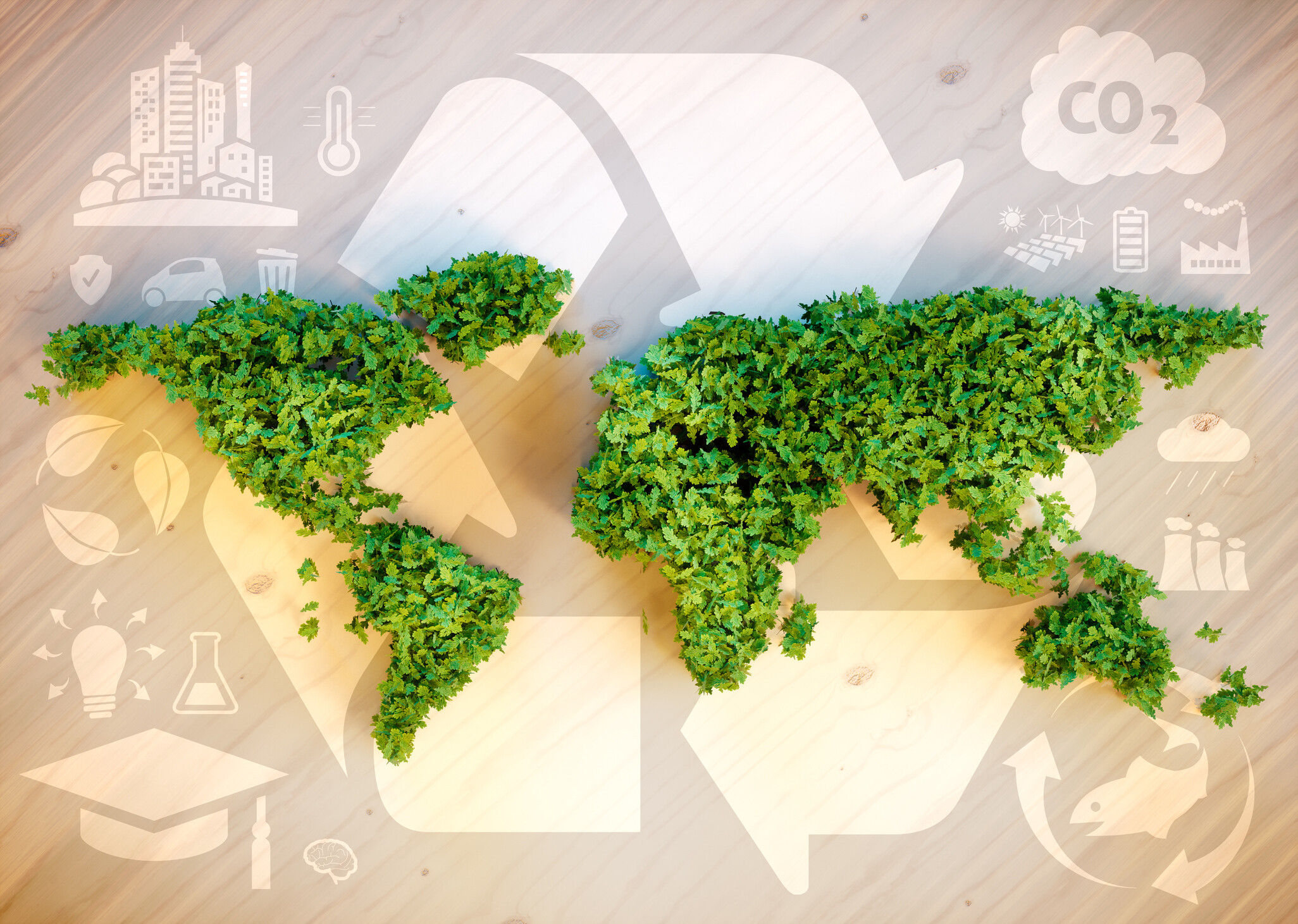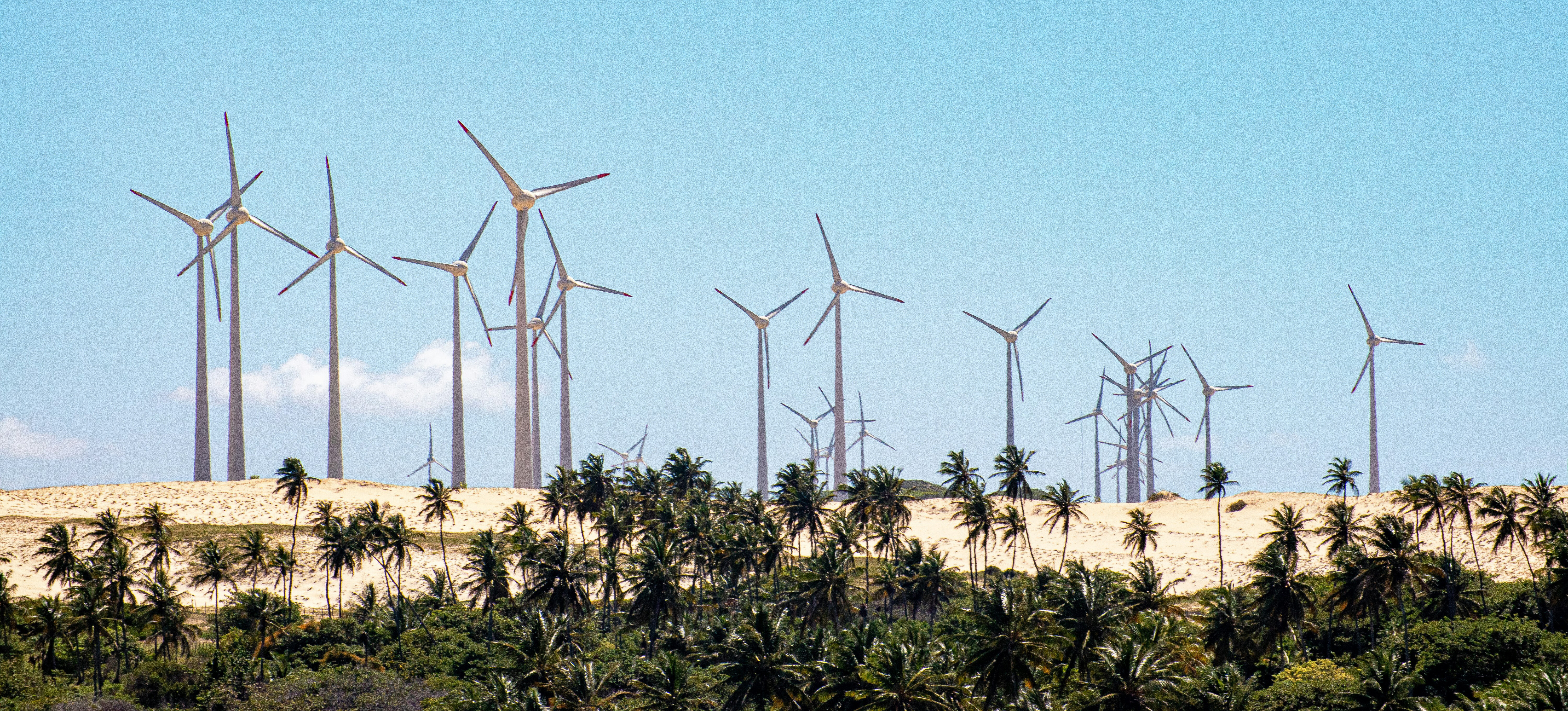These regions produce a lot of carbon emissions - here’s what they plan to do about it
Big CO2 emitters like China and the European Union are also investing heavily in renewable energy like solar and wind power.
Image: Unsplash/Anders J
Stay up to date:
Energy Transition
Listen to the article
- Clean energy comprised 67% of new electricity generating capacity in the US in the first half of 2022, according to the Federal Energy Regulatory Commission.
- Other big CO2 emitters like China and the European Union are also investing heavily in renewable energy like solar and wind power.
- However, the International Energy Agency says annual investment in clean energy will need to triple by 2030 if the world is to achieve net-zero emissions by 2050.
Around a third of global electricity production capacity currently comes from low carbon sources, with 26% from renewables and around 10% from nuclear power. The remaining two-thirds come from greenhouse-gas emitting fossil fuels such as coal, gas and oil.
Renewable energy sources like solar, wind and hydropower need to become a much bigger part of the global energy mix if governments around the world are to meet their net-zero commitments.
Concerted action from the biggest emitting countries and blocs such as the US, China and the European Union (EU) will be crucial. So how are they investing in clean energy?
The US ramps up clean electricity generation
Clean energy comprised 67% of new electric generating capacity in the US during the first half of 2022, according to new data released by the Federal Energy Regulatory Commission (FERC).
Wind and solar power contributed the lion’s share of the mix, with geothermal, hydropower and biomass making up the balance. The remaining new electrical generating capacity came mainly from gas and coal.
Renewable energy now makes up 26.74% of total available installed generating capacity in the US. That compares to 19.7% five years ago and 14.76% a decade ago.
President Joe Biden signed the biggest US climate package into law this month, as he races to meet the country’s carbon reduction target of 40% by 2030. The Inflation Reduction Act will provide a $369 billion investment in clean domestic energy production.
A further $60 billion will be allocated to create millions of clean manufacturing jobs. The bill also includes tax credits and rebates to help reduce the cost of buying electric vehicles and installing solar panels and heat pumps in homes.
China’s push for renewable energy growth
China is also boosting renewable energy production as it attempts to meet climate goals and also reduce dependency on external energy supplies. The country is set to install a record 156 gigawatts (GW) of wind turbines and solar panels by the end of 2022. This represents a 25% jump from the previous record set in 2021, according to Bloomberg, which reports that China added around 35 gigawatts of wind and solar capacity in the first half of 2022. More is expected as authorities and the private sector attempt to meet annual targets.
President Xi Jinping has pledged to ensure emissions peak before 2030 and China achieves net-zero carbon neutrality by 2060.
Europe races to wean itself off Russian energy
The EU was the second largest market after China in terms of increased renewable energy capacity, according to the International Energy Agency (IEA).
The EU has stated its determination to end dependence on Russian energy supplies before 2030. Its REPower EU plan includes spending around $200 billion between now and 2027 to speed up renewable energy generation. Part of the plan is to double Europe’s solar power capacity by 2025 making it the fastest growing source of energy in the EU.
The EU Solar Energy Strategy aims to bring online more than 320GW of newly installed solar power by 2025, over twice the current level, and increase it to almost 600GW by 2030.

Solar power leads the rush for renewables
The IEA says renewable capacity is expected to increase globally by 8% in 2022, with solar power accounting for 60% of this rise. It says a strong policy environment in both China and the EU is driving faster deployment of large projects.
Additional global offshore wind power will double in 2022 compared to 2020, with China predicted to have the world’s largest capacity by the end of this year. However the organization says global renewable capacity additions are expected to remain stable in 2023 compared to 2022, unless new and stronger policies are implemented.
But to reach net-zero emissions by 2050, annual clean energy investment globally will need to triple by 2030 to around $4 trillion. Global industries remain behind on targets and reliable data will be key in the complex process of decarbonization, says the World Economic Forum. Its Net-Zero Industry Tracker 2022, developed with consulting firm Accenture, aims to provide a “robust cross-industry platform that will track sectors’ journeys”.
How is the World Economic Forum facilitating the transition to clean energy?
Accept our marketing cookies to access this content.
These cookies are currently disabled in your browser.
Don't miss any update on this topic
Create a free account and access your personalized content collection with our latest publications and analyses.
License and Republishing
World Economic Forum articles may be republished in accordance with the Creative Commons Attribution-NonCommercial-NoDerivatives 4.0 International Public License, and in accordance with our Terms of Use.
The views expressed in this article are those of the author alone and not the World Economic Forum.
Related topics:
Forum Stories newsletter
Bringing you weekly curated insights and analysis on the global issues that matter.
More on Energy TransitionSee all
Why India’s carbon market needs a price stability mechanism for its new Carbon Credit Trading Scheme
Subham Shrivastava and Saurabh Trivedi
November 10, 2025
Andrea Willige
November 10, 2025
Network of the Global Future Councils and Kaiser Kuo
November 4, 2025
Esther Finidori and Lisa Wee
November 4, 2025
Ezgi Canpolat and Varalakshmi Vemuru
November 3, 2025
Ayla Majid
October 30, 2025





